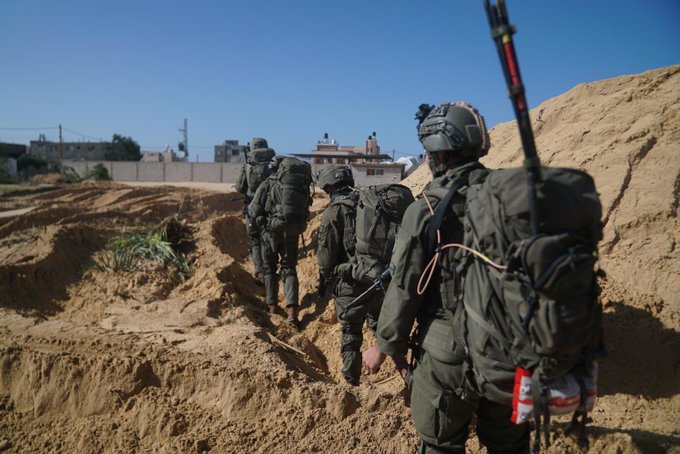Israeli political and security leaders have emphasized that the conflict in Gaza will persist for an extended period, irrespective of any negotiations for the release of Israeli hostages.
Israel’s objective remains the removal of the Hamas regime.
Senior security officials project that following the seizure of the Khan Yunis area, the IDF will assume control of the Rafah region and the “Philadelphia Corridor,” subsequently dismantling the four battalions constituting Hamas’ Rafah Brigade.
Effectively, the IDF aims to restore the situation to its pre-2005 state, before Israel disengaged from the Gaza Strip.
Once Hamas’ major military units are disbanded, the organization is expected to revert to guerilla warfare tactics, employing small squads to engage IDF forces.
Despite its relatively small size and population of 2.3 million Palestinians, the Gaza Strip is poised to become a focal point of active combat.
While Israel aims to remove Hamas from power, it recognizes the need for a civilian Palestinian administration that opposes terrorism. However, the conflict will not conclude with regime change.
Security assessments suggest that Hamas will resort to ambushes and attacks on IDF forces, transforming the conflict into a war of attrition.
Hamas’ objective will be to exhaust IDF forces and prompt their withdrawal, while the IDF will pursue the elimination of Hamas operatives and the demilitarization of the Gaza Strip.
This protracted conflict in Gaza will likely impact Israel’s northern border with Hezbollah, leading to continued hostilities. Additionally, the conflict may extend to Yemen, with Houthi attacks on Israel and naval blockades in the Red Sea.
Judea and Samaria may also become theaters of conflict as Palestinians seek to open another front against Israel to divide its military resources while it engages in Gaza.
Israel perceives this conflict as part of a broader confrontation with the “axis of evil” led by Iran, with Shiite militias in Iraq and Syria potentially joining attacks on Israel.
Israel’s strategy involves isolating the northern Gaza Strip, establishing a buffer zone to prevent terrorist infiltrations, and facilitating the return of Gaza residents to their homes. The IDF will gradually reduce its presence in Gaza, transitioning from reserve to regular forces to combat Hamas.
Israel aims to garner international support by framing its actions as necessary to neutralize Hamas’ military capabilities, likening its mission to the multinational coalition combating ISIS in Iraq and Syria.



